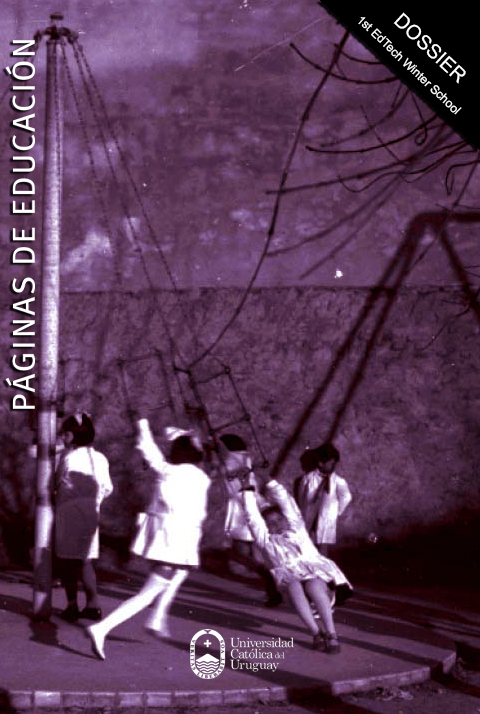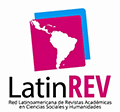YOUNG PEOPLE AND VIRTUAL COMMUNITIES. NEW WAYS OF LEARNING AND OF SOCIAL PARTICIPATION IN THE DIGITAL SOCIETY
DOI:
https://doi.org/10.22235/pe.v11i1.1554Keywords:
virtual communities, youth, sociocultural learning, ethnographyAbstract
This paper is based on a research project developed in Spain, where we explored how and what young people learn in virtual communities. Although the term virtual community has been broadly used to approach online social interactions, it has generated several academic debates. Nevertheless, it is a useful term to define a social network made up mostly of young people who share an interest and choose to interact online with others to discuss, exchange, show their creations to the world, and promote certain values. As researchers on Sociology and Education, we find this phenomenon especially intriguing. We wonder why young people engage in virtual communities, why they should spend so much time interacting with others online and what benefits they consider they have. Our hypothesis is that it has to do with a shared sense of belonging to a community and the possibilities young people find to create opportunities to learn with and from each other. The results of this article are based on the analysis of seven case studies conducted in virtual communities, and they address two main questions: what leads young people to participate in virtual communities and how is learning and social participation promoted through virtual communities.
Downloads
References
Antonsich, M. (2010). Searching for belonging: an analytical framework. Geography Compass, 4(6), 644-659.
Banks, J., Au, K., Ball, A., Bell, P., Gordon, E., Gutierrez, K., & Zhou, M. (2007). Learning in and out of school in diverse environments. Seattle, WA: University of Washington.
Bauman, Z. (2003). En busca de seguridad en un mundo hostil. Madrid, España: Siglo XXI.
Bell, D. (2001). An introduction to cybercultures. London, United Kingdom: Routledge.
Bosco, M. A., Miño-Puigcercós, R., Rivera-Vargas, P. y Alonso-Cano, C. (2016). Comunidades Virtuales, jóvenes y aprendizaje. La complejidad de una categorización. Journal for Educators, Teachers and Trainers, 7(2). 25 –37.
Braun, V., & Clarke, V. (2006). Using thematic analysis in psychology. Qualitative research in psychology, 3(2), 77-101.
Falzon, M. A. (2009). Multi‐sited Ethnography. Theory, praxis and locality in contemporary research. Burlington, NC: Ashgate.
Figallo, C. (1998). Hosting Web communities: Building relationships, increasing customer loyalty, and maintaining a competitive edge. New York, NY: John Wiley & Sons.
Gros, B. (2008). Las comunidades virtuales para la formación permanente del profesorado. REIRE. Revista d’Innovació i Recerca en Educació, 1, 1-10. Retrieved from http://www.raco.cat/index.php/REIRE
Henri, F., & Pudelko, B. (2003). Understanding and analyzing activity and learning in virtual communities. Journal of Computer Assisted Learning, 19, 474-487.
Hine, C. (Ed.). (2005). Virtual Methods. Issues in Social Research on the Internet. New York, NY: Berg.
Hine, C. (2004). Etnografía virtual. Barcelona, Spain: UOC.
Hobsbawm, E. (1996), The cult of identity politics. New Left Review, 217, 40-57.
Ito, M., Horst, H., Bittanti, M., Boyd, D., Herr-Stephenson, B., Lange, P.G., Pascoe, C.J., & Robinson, L. (2008). Living and learning with new media: summary of findings from the digital youth project. MacArthur Foundation Reports on Digital Media and Learning. Chicago, IL: MacArthur Foundation Press. Retrieved from http://bit.ly/QzyKrL
Jenkins, H., Ito, M., & Boyd, D. (2016). Participatory Culture in a Networked Era. Cambridge, United Kingdom: Polity Press.
Jenkins, H. (2014). Rethinking ‘rethinking convergence/culture’. Cultural Studies, 28(2), 267-297.
Lave, J., & Wenger, E. (1991). Situated learning. Legitimate peripheral participation. Cambridge, United Kingdom: Cambridge University Press.
Miño, R., Rivera-Vargas, P., & Cobo, C. (2018). Virtual Communities As Safe Spaces Created By Young Feminists. Identity, Mobility and Sense of Belonging. In Stahl, Habib & Ward (Eds), Identities, Youth and Belonging: International Perspectives. Basingstoke, United Kingdom: Palgrave Macmillan.
Miño, R., Rivera-Vargas, P., & Salazar, C. (2017). Jóvenes y comunidades virtuales: generando espacios y redes de participación social. In P. Rivera-Vargas, E. Sánchez, R. Morales-Olivares, I. Sáez-Rosenkranz, C. Yévenes, & S. Butendieck (Coords.), Conocimiento para la equidad social: pensando Chile globalmente (pp. 153-157). Santiago de Chile, Chile: Colección Políticas Públicas – USACH.
Montes de Oca, J., García, A., & Fuster, C. (2011). Las Comunidades Virtuales De Aprendizaje: Un Nuevo Puente Para La Comunicación Entre Los Hombres. Contribuciones a las Ciencias Sociales, 11, 22-50.
Rheingold, H. (1993). The virtual community: Finding connection in a computerized world. Boston, MA: Addison-Wesley Longman Publishing.
Rheingold, H. (2000). The virtual community: Homesteading on the electronic frontier. Boston, MA: MIT Press.
Sacristán, A. (2013). Sociedad de Conocimiento, Tecnología y Educación. Madrid, Spain: Morata.















